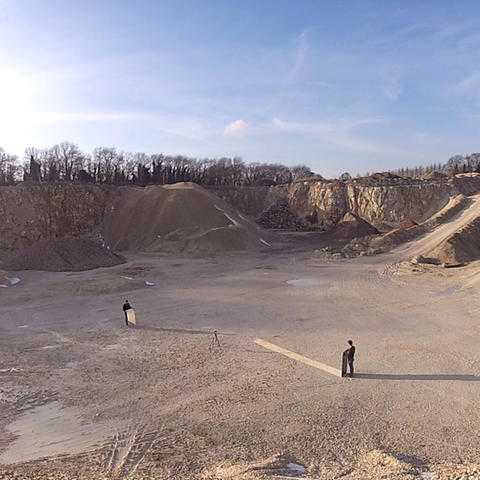IMT Gallery
Unit 2, 210 Cambridge Heath Road
London
E2 9NQ
United Kingdom

York, Yorkshire, England
This is the quarry, our quarry, your quarry,
The Quarry is a continuing collaboration between Charles Danby and Rob Smith exploring the site of Robert Smithson's artwork Chalk Mirror Displacement, which was produced for the ICA, London, exhibition When Attitudes Become Form in 1969.
In 2011 Charles Danby and Rob Smith entered an archive in search of the site of an artwork. In 2012 they travelled to York, Yorkshire, England and they entered the quarry-
-We like you have travelled to York, to Yorkshire, to England. We like you have turned and returned. We like you make believe. We like you have seen chalk, have seen ourselves through the mirror, and have become a displacement within a cut landscape. We like you see the quarry, and we like you are quarry.
IMT Gallery is pleased to present The Quarry
Room 1:
Quarry 1 (2013) is a room featuring works produced during Danby and Smith's exploration of the quarry. These include a rotating projected panorama, mirror screens, split chalk and anaglyph video.
Room 2:
Quarry 2 (2013) exists within a room. It is three stacked tables that support, contain and display images and objects of and from the site of the quarry. Central to the work are a series of triangulated photographs - the artist, the object, the artist. These three part photographs, folded and internally mirrored, have been taken as the artists have navigated the quarry in search of its artwork. Viewed through glass they form a physical network of generative pathways, routes and intersections. Set across multiple layers or strata the work introduces material elements including haematite, red chalk and pond water.
Glossary of terms:
Split chalk: Chalk is a porous material that takes in water from its environment. When this water freezes it causes the stone to fracture into two or more parts. A chalk rock is divided in two parts and the missing section of each is printed onto the corresponding cut surface of the other. Its image is seen in three dimensions.
Anaglyph: An image that embodies two perspectives in the single plane of its surface.
Triangulation: A point in space, an object, can only be determined by its position relative to two other points in space. An object that is photographed at the same moment in time by each artist describes three respective points or positions. Two images of a photographed object are placed through red/cyan channels to establish a single anaglyph image.
Pond water: Charles Darwin postulated that life evolved from the primordial water of shallow ponds. Such water is the lifeblood of succession and the generative growth of living systems. In remote areas of the quarry rivulets and fauna are to be found, with thickets, brush and saplings yielding to woodland trees and forest.
Succession: An ecological pathway through which ecosystems increase in complexity over time. The archetype describes pioneer species such as moss and lichen taking hold on bare rock, being overtaken by grasses, then shrubs and moving towards the climax community of the forest.
Red chalk: An early cretaceous limestone found in the east of England. Derived from haematite it is sanguine blood-like chalk used for underpainting and as a preferred drawing material of the Renaissance period.
Haematite: A naturally occurring anomaly in chalk strata. It is the mineral form of iron oxide occurring in faults and spaces left during the geological compression of shells, coccoliths. It emerges, excavated, in small meteorite-like crystalline lumps.
Mirror: The mirror holds the world to the power of two. The image becomes the product of itself. Artist2, Quarry2, Artwork2, Audience2,(York, Yorkshire, England)2. The mirror's screen becomes the conduit between the two.
Charles Danby and Rob Smith have collaborated on this work since 2011. Charles Danby is an artist, curator and writer based in London and Newcastle, and Rob Smith is an artist based at Wysing Arts Centre.
The Quarry has an online site: www.oxtedengland.com
